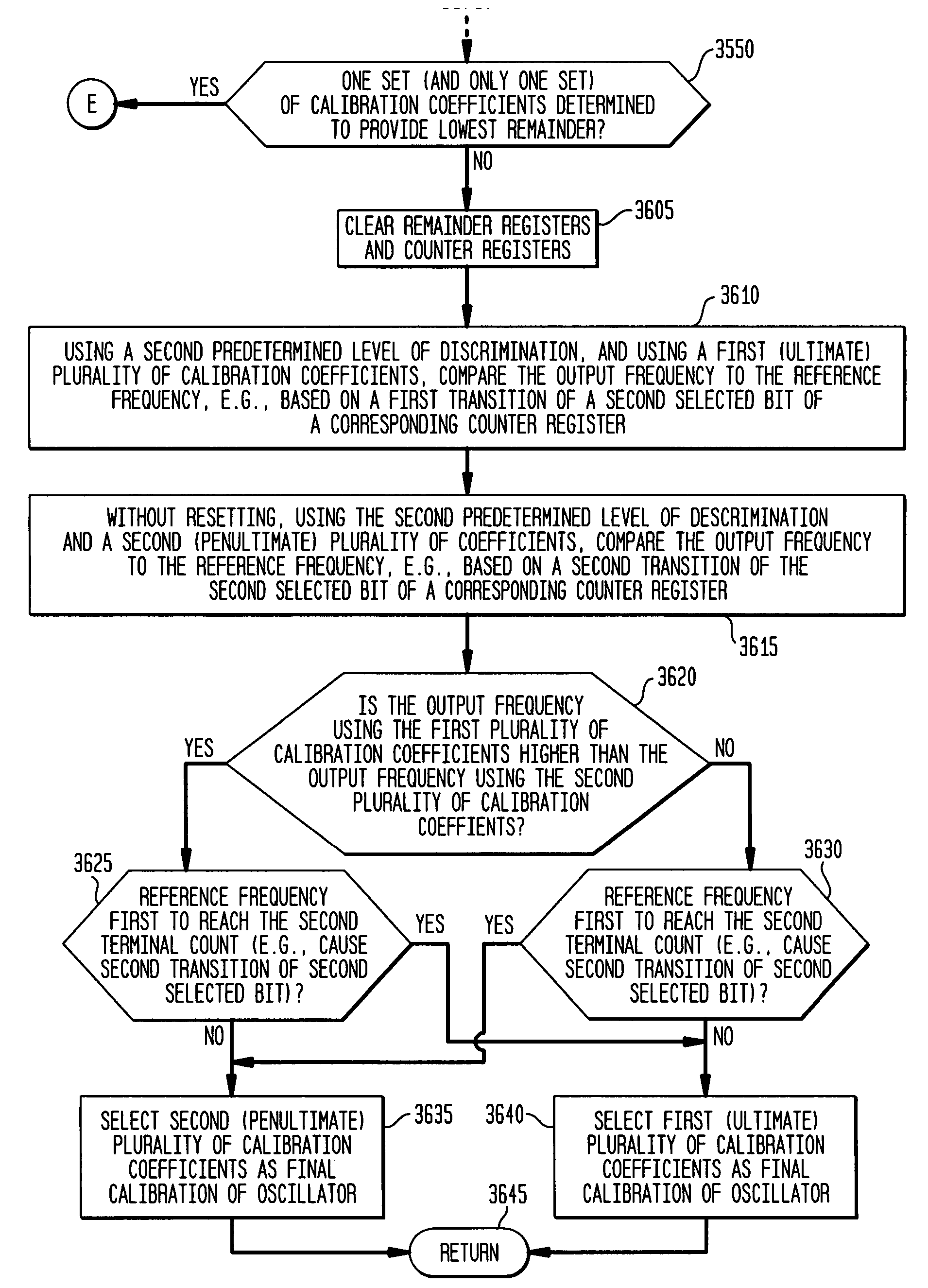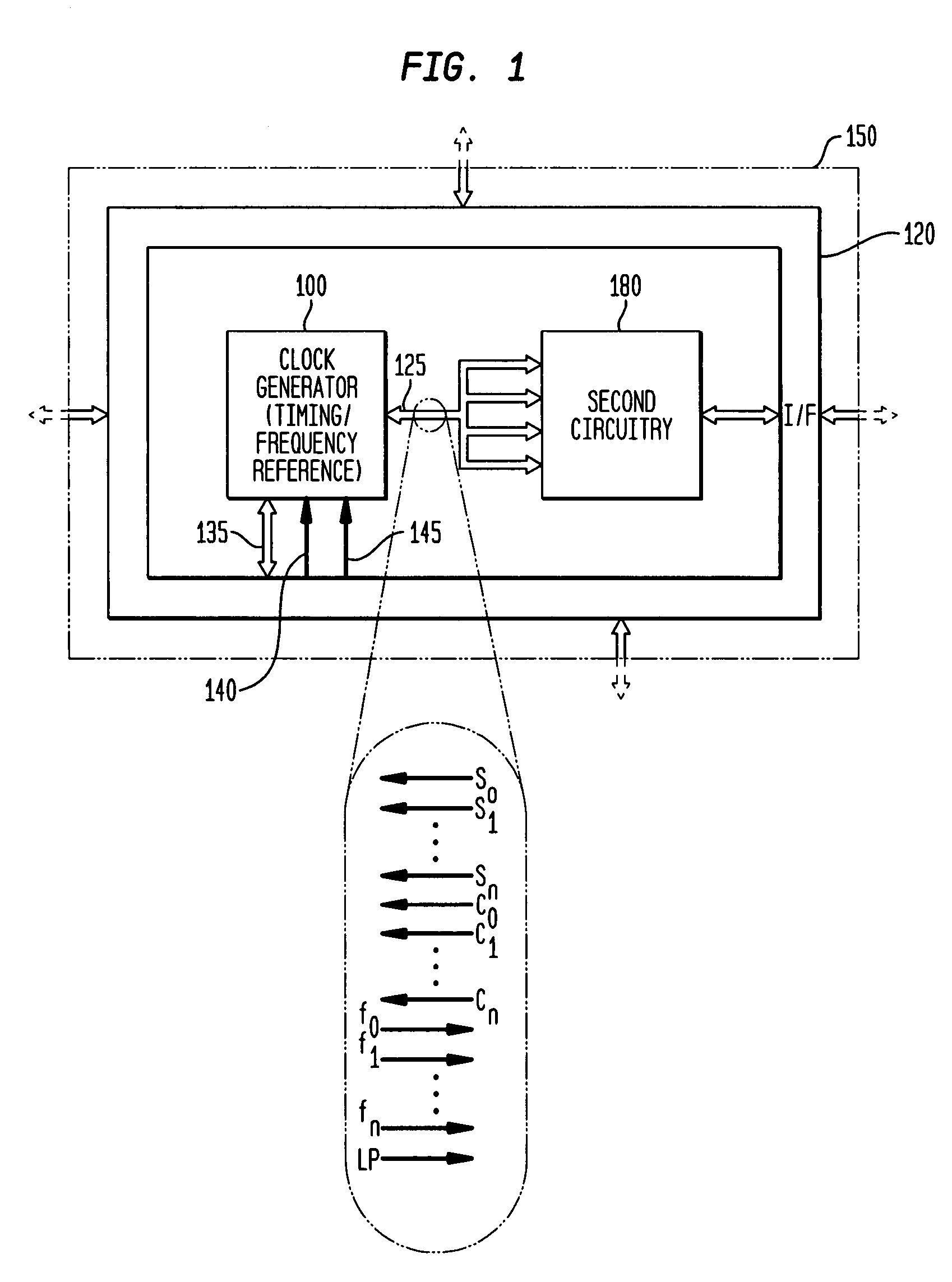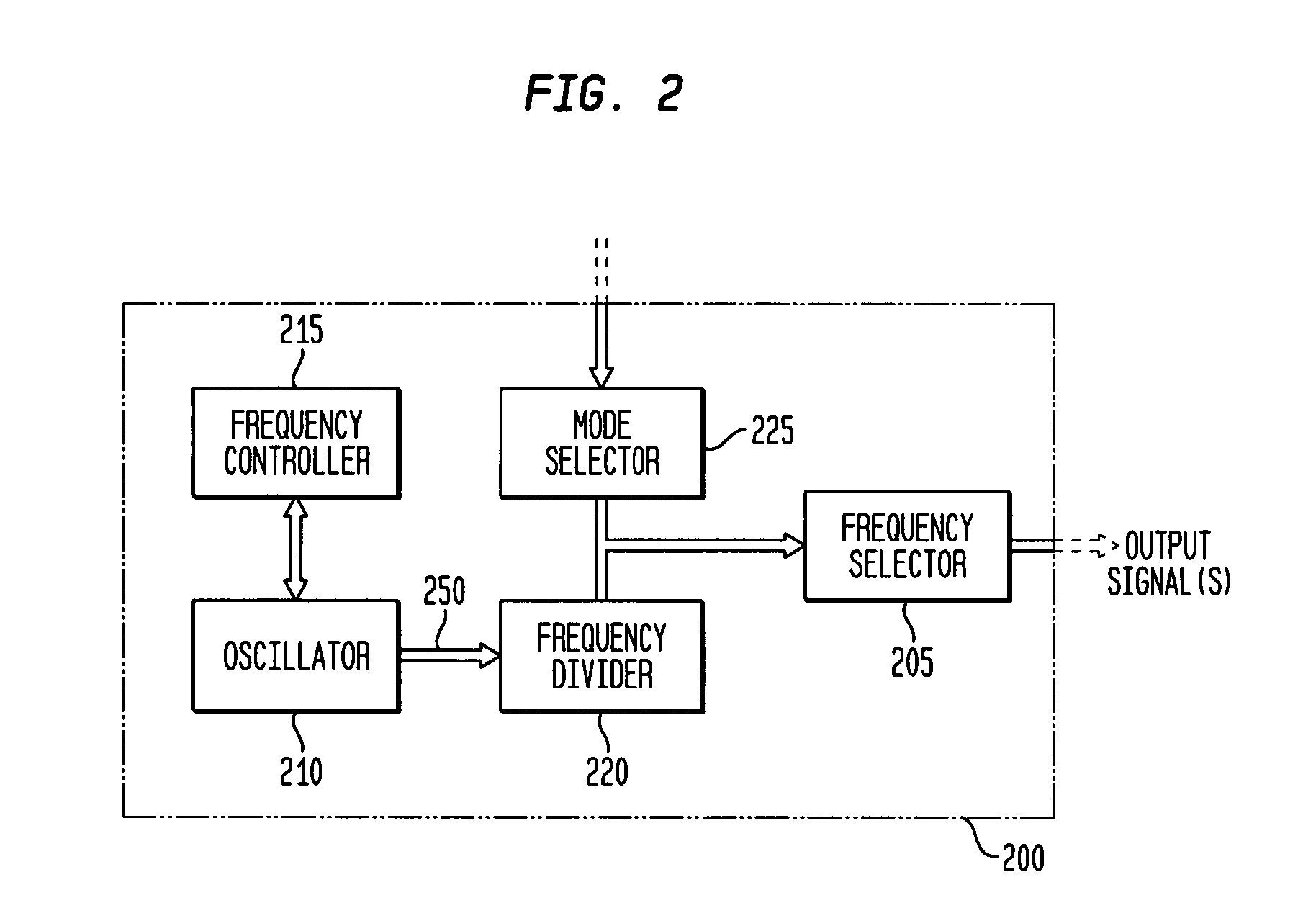Frequency calibration for a monolithic clock generator and timing/frequency reference
a clock signal and monolithic technology, applied in the direction of oscillator generators, pulse automatic control, instruments, etc., can solve the problems of inability to manufacture as part of the same integrated circuit, increased power dissipation, and detrimental additional power dissipation, etc., to achieve significant noise reduction, phase noise reduction, and phase noise power reduction
- Summary
- Abstract
- Description
- Claims
- Application Information
AI Technical Summary
Benefits of technology
Problems solved by technology
Method used
Image
Examples
Embodiment Construction
[0069]While the present invention is susceptible of embodiment in many different forms, there are shown in the drawings and will be described herein in detail specific examples and embodiments thereof, with the understanding that the present disclosure is to be considered as an exemplification of the principles of the invention and is not intended to limit the invention to the specific examples and embodiments illustrated, and that numerous variations or modifications from the described embodiments may be possible and are considered equivalent. In this respect, before explaining at least one embodiment consistent with the present invention in detail, it is to be understood that the invention is not limited in its application to the details of construction and to the arrangements of components set forth above and below, illustrated in the drawings, or as described in the examples. Methods, systems and apparatuses consistent with the present invention are capable of other embodiments ...
PUM
 Login to View More
Login to View More Abstract
Description
Claims
Application Information
 Login to View More
Login to View More - R&D
- Intellectual Property
- Life Sciences
- Materials
- Tech Scout
- Unparalleled Data Quality
- Higher Quality Content
- 60% Fewer Hallucinations
Browse by: Latest US Patents, China's latest patents, Technical Efficacy Thesaurus, Application Domain, Technology Topic, Popular Technical Reports.
© 2025 PatSnap. All rights reserved.Legal|Privacy policy|Modern Slavery Act Transparency Statement|Sitemap|About US| Contact US: help@patsnap.com



